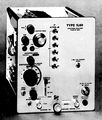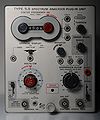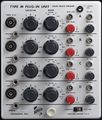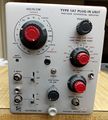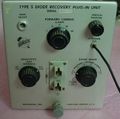Tekwiki Guidelines: Difference between revisions
(→Units) |
No edit summary |
||
| Line 2: | Line 2: | ||
These are things to consider, not rigid rules. | These are things to consider, not rigid rules. | ||
Something is usually better than nothing. | *Something is usually better than nothing. | ||
Perfectionism is harmful. | *Perfectionism is harmful. | ||
It's ok to click "Save changes" when things aren't perfect. | *It's ok to click "Save changes" when things aren't perfect. | ||
We can improve things later. | *We can improve things later. | ||
==Text== | ==Text== | ||
Text should be in the style of an encyclopedia. | '''Text should be in the style of an encyclopedia. ''' | ||
Avoid unattributed text in the first person. | Avoid unattributed text in the first person. | ||
We have some [[article templates]] that generate headlines, infoboxes and the like. Using these makes it easy to have consistently styled articles, but they are optional to use. | |||
In general, don't worry about style or formatting issues too much. We really appreciate good technical input and will help with formatting if needed. | |||
==Scans== | ==Scans== | ||
Favor any scan over no scan. | '''Favor any scan over no scan. ''' | ||
The presence of free scans of manuals and other documentation is hugely important. | The presence of free scans of manuals and other documentation is hugely important. | ||
In many cases the availability of a free scan makes the difference between an instrument being put in the trash versus being restored. | In many cases the availability of a free scan makes the difference between an instrument being put in the trash versus being restored. | ||
Favor high quality over small file size. | '''Favor high quality over small file size. ''' | ||
What seems like a big file today will not seem so big in ten years. | What seems like a big file today will not seem so big in ten years. | ||
| Line 29: | Line 33: | ||
==Quotes== | ==Quotes== | ||
If you quote a person or a document, make that clear by saying who/what is being quoted, and using blockquote tags. | If you quote a person or a document, make that clear by saying who/what is being quoted, and using <code><nowiki><blockquote>...</blockquote></nowiki></code> tags. | ||
It's fine to have text in the first person inside of an attributed quote. | It's fine to have text in the first person inside of an attributed quote. | ||
For example, see the quote toward the top of the [[524]] page. | For example, see the quote toward the top of the [[524]] page. | ||
| Line 36: | Line 40: | ||
On Tekwiki, we use a space between the number and the unit. It's best to use a non-breaking space. | On Tekwiki, we use a space between the number and the unit. It's best to use a non-breaking space. | ||
The predefined unit buttons shown under the text editor make it easy to insert units beginning with a non-breaking space character. | The predefined unit buttons shown under the text editor make it easy to insert units beginning with a non-breaking space character. | ||
We aren't rigid about imperial units versus metric, e.g., kg versus lb. | We aren't rigid about imperial units versus metric, e.g., kg versus lb. | ||
Use one, or the other, or both. | Use one, or the other, or both. | ||
| Line 48: | Line 53: | ||
==Links== | ==Links== | ||
Internal links are helpful. | '''Internal links are helpful. ''' | ||
When another instrument is mentioned in a page, make that a link in case readers want to explore that connection. | When another instrument is mentioned in a page, make that a link in case readers want to explore that connection. | ||
==Categories== | ==Categories== | ||
We have defined a number of categories. | We have defined a number of categories. | ||
Pages are added to a category by putting a Category: tag in the page, typically at the bottom. | Pages are added to a category by putting a <code><nowiki>[[Category:...]]</nowiki></code> tag in the page, typically at the bottom. | ||
See, for example, the bottom of the [[82|Type 82]] page. | See, for example, the bottom of the [[82|Type 82]] page. | ||
This allows us to have an | |||
This allows us to have an auto-generated page that lists all items in a category. | |||
If it seems appropriate to add a certain category tag to a page, do so. | If it seems appropriate to add a certain category tag to a page, do so. | ||
Also, if it seems appropriate to make a new category, do so. | Also, if it seems appropriate to make a new category, do so. | ||
Categories are usually categorized themselves, thereby creating a hierarchy of categories, or taxonomy. | |||
For example, the category "TM500 multimeter plugins" is categorized as both "Digital multimeters" and "TM500 series plugins". | |||
==Talk/Discussion Pages== | ==Talk/Discussion Pages== | ||
| Line 66: | Line 75: | ||
==Collaboration== | ==Collaboration== | ||
Feel free to improve text added by other people. | '''Feel free to improve text added by other people.''' | ||
If something is confusing, make it clear. | If something is confusing, make it clear. | ||
If you're unsure, raise the question on the Talk/Discussion page. | If you're unsure, raise the question on the Talk/Discussion page. | ||
==Photos== | ==Photos== | ||
Any photo is better than no photo. | '''Any photo is better than no photo.''' | ||
Prefer high-resolution, in-focus photos. | Prefer high-resolution, in-focus photos. | ||
Don't use photos from other websites if you think it will upset the owner of the photo. | Don't use photos from other websites if you think it will upset the owner of the photo. | ||
Prefer diffused lighting (no hard shadows), natural color balance, and good color rendition. | Prefer diffused lighting (no hard shadows), natural color balance, and good color rendition. | ||
| Line 78: | Line 88: | ||
Prefer photos with low noise (without artificial denoising). | Prefer photos with low noise (without artificial denoising). | ||
Low noise often comes from having adequate light. | Low noise often comes from having adequate light. | ||
Prefer photos without the in-camera flash. | Prefer photos without the in-camera flash. | ||
In-camera flashes usually result in high glare, hard shadows, and poor color rendition. | In-camera flashes usually result in high glare, hard shadows, and poor color rendition. | ||
Avoid geometric distortion (like taking a front panel shot from above) and trim excessive unrelated background. | |||
When photographing an instrument, it's good to also get internal photos. Using a high f stop and indirect flash (e.g. via a white ceiling) helps put a large part of the image in focus. | |||
===Commented examples=== | |||
<gallery> | <gallery> | ||
Tek_524_trace.jpg|Hard shadows are distracting | Tek_524_trace.jpg|Hard shadows are distracting | ||
| Line 88: | Line 103: | ||
Tek_rm547.jpg|Hard shadows, but still a useful photo | Tek_rm547.jpg|Hard shadows, but still a useful photo | ||
Tek 511a 4.JPG|Low resolution image | Tek 511a 4.JPG|Low resolution image | ||
Tek_1L60_from_fiche.jpg|Low quality image from | Tek_1L60_from_fiche.jpg|Low quality image taken from documentation, much better than nothing | ||
Timkoeth_519_TWK_1379.jpg|Beautiful CRT trace photo of a [[519]]. | Timkoeth_519_TWK_1379.jpg|Beautiful CRT trace photo of a [[519]]. | ||
Tek_945_front7c.jpg|Good straight-on scope photo using two flashes: one bouncing off the ceiling, one passing through a white umbrella. | Tek_945_front7c.jpg|Good straight-on scope photo using two flashes: one bouncing off the ceiling, one passing through a white umbrella. | ||
Tek_7a42_fr4.jpg|Good photo of traces and readout on 7000-series scope | Tek_7a42_fr4.jpg|Good photo of traces and readout on 7000-series scope | ||
Tek_11a33_rearleft.jpg|Good photo of the inside of an [[11A33]]. Plenty of light, but not too much glare. Colors and textures are realistic. | Tek_11a33_rearleft.jpg|Good photo of the inside of an [[11A33]]. Plenty of light, but not too much glare. Colors and textures are realistic. | ||
Tek-7623A.jpg|Good CRT traces and a good picture of the front panel in one photo. Rare. | Tek-7623A.jpg|Good CRT traces and a good picture of the front panel in one photo. Rare. | ||
Tek_11a33_inputrelay.jpg|Macro closeups can be interesting, particularly when they illustrate something important. | Tek_11a33_inputrelay.jpg|Macro closeups can be interesting, particularly when they illustrate something important. | ||
Tek_1l5_front.JPG|This image suffers from nonuniform illumination. | Tek_1l5_front.JPG|This image suffers from nonuniform illumination. | ||
Revision as of 06:18, 7 December 2018
This page provides guidelines on Tekwiki content. These are things to consider, not rigid rules.
- Something is usually better than nothing.
- Perfectionism is harmful.
- It's ok to click "Save changes" when things aren't perfect.
- We can improve things later.
Text
Text should be in the style of an encyclopedia. Avoid unattributed text in the first person.
We have some article templates that generate headlines, infoboxes and the like. Using these makes it easy to have consistently styled articles, but they are optional to use.
In general, don't worry about style or formatting issues too much. We really appreciate good technical input and will help with formatting if needed.
Scans
Favor any scan over no scan. The presence of free scans of manuals and other documentation is hugely important. In many cases the availability of a free scan makes the difference between an instrument being put in the trash versus being restored.
Favor high quality over small file size. What seems like a big file today will not seem so big in ten years.
Beware of software that claims to provide automatic image enhancement for scans. Automatic enhancement often corrupts the scan in ways that are hard to notice until later. Recommendation: Turn off all processing except for OCR. Always keep the raw scan in case it needs to be reprocessed for whatever reason. Maybe in twenty years, the automatic enhancement software will be reliable.
It is fine to upload scans that other people made for free distribution. Don't upload scans from companies like Artek, where the scan was done to make money.
Quotes
If you quote a person or a document, make that clear by saying who/what is being quoted, and using <blockquote>...</blockquote> tags.
It's fine to have text in the first person inside of an attributed quote.
For example, see the quote toward the top of the 524 page.
Units
On Tekwiki, we use a space between the number and the unit. It's best to use a non-breaking space. The predefined unit buttons shown under the text editor make it easy to insert units beginning with a non-breaking space character.
We aren't rigid about imperial units versus metric, e.g., kg versus lb. Use one, or the other, or both.
Attribution
Sometimes another website has the perfect photo, or perfect document, or perfect table of data that's not available elsewhere. In those cases, it is fine to link to the external resource from a Tekwiki article. But we want Tekwiki to last for a long time, so it is good to make a local copy if possible, in case the external website (or just that resource) disappears. One way to do this is to make a copy of the resource, but to comment out the link to the local copy, and have the active link go to the external site. If the external site disappears, we can uncomment the local link and comment the external link.
Links
Internal links are helpful. When another instrument is mentioned in a page, make that a link in case readers want to explore that connection.
Categories
We have defined a number of categories.
Pages are added to a category by putting a [[Category:...]] tag in the page, typically at the bottom.
See, for example, the bottom of the Type 82 page.
This allows us to have an auto-generated page that lists all items in a category. If it seems appropriate to add a certain category tag to a page, do so. Also, if it seems appropriate to make a new category, do so.
Categories are usually categorized themselves, thereby creating a hierarchy of categories, or taxonomy. For example, the category "TM500 multimeter plugins" is categorized as both "Digital multimeters" and "TM500 series plugins".
Talk/Discussion Pages
If you have any doubt about a change that you want to make, or a change that somebody else made, feel free to edit the associated Talk/Discussion page (the "Discussion" link at the upper left of each page). Tekwiki administrators monitor those pages and will respond to questions. For example, if you want to start a new category but aren't sure, feel free to edit the Talk/Discussion page.
Collaboration
Feel free to improve text added by other people. If something is confusing, make it clear. If you're unsure, raise the question on the Talk/Discussion page.
Photos
Any photo is better than no photo. Prefer high-resolution, in-focus photos.
Don't use photos from other websites if you think it will upset the owner of the photo. Prefer diffused lighting (no hard shadows), natural color balance, and good color rendition. Good color rendition often comes from having minimal glare, which often comes from diffused lighting. Prefer photos with low noise (without artificial denoising). Low noise often comes from having adequate light.
Prefer photos without the in-camera flash. In-camera flashes usually result in high glare, hard shadows, and poor color rendition.
Avoid geometric distortion (like taking a front panel shot from above) and trim excessive unrelated background.
When photographing an instrument, it's good to also get internal photos. Using a high f stop and indirect flash (e.g. via a white ceiling) helps put a large part of the image in focus.
Commented examples
-
Hard shadows are distracting
-
Same subject, but without hard shadows
-
Good photo, taken outside on a cloudy day
-
Hard shadows, but still a useful photo
-
Low resolution image
-
Low quality image taken from documentation, much better than nothing
-
Beautiful CRT trace photo of a 519.
-
Good straight-on scope photo using two flashes: one bouncing off the ceiling, one passing through a white umbrella.
-
Good photo of traces and readout on 7000-series scope
-
Good photo of the inside of an 11A33. Plenty of light, but not too much glare. Colors and textures are realistic.
-
Good CRT traces and a good picture of the front panel in one photo. Rare.
-
Macro closeups can be interesting, particularly when they illustrate something important.
-
This image suffers from nonuniform illumination.
-
Hard shadows from light coming from below. It seems unnatural.
-
Good color rendition. Red looks red.
-
Low resolution and bad color balance. The plug-in looks green.
-
Photo using a flashlight as a light source. Nonuniform illumination and hard shadows, but decent color rendition, decent focus, and not too noisy. Much better than nothing.
It is difficult to get a good photo of an oscilloscope showing its trace.
-
It is common for photos of scope traces to show artifacts that are normally not seen.





